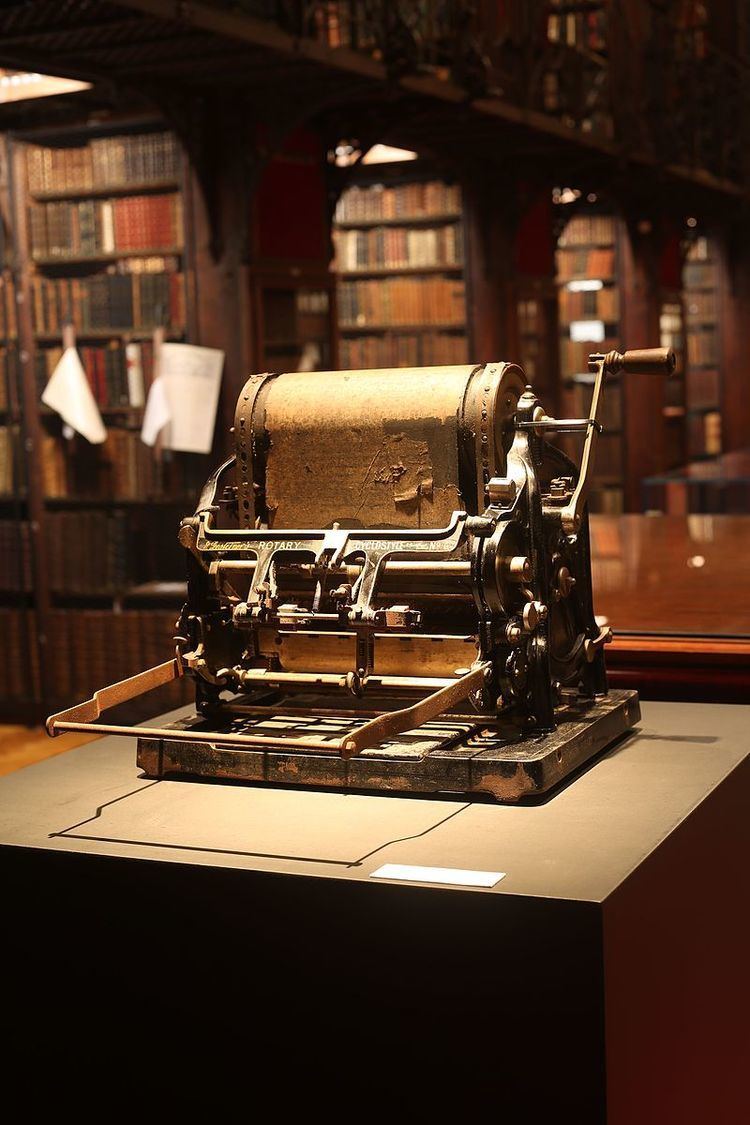 | ||
The Cyclostyle duplicating process is a form of stencil copying. A stencil is cut by small toothed wheels on waxed or glazed paper. A large number of small dots are cut out in the glazed paper, removing the glaze at the dots, then ink is applied. It was invented in the later 19th century by David Gestetner, who named it "cyclostyle" after a drawing tool he used. Its name incorporates "stylus", classical Latin word for a pen.
In year 1893 Francis Galton gave the following brief description of a cyclostyle:
In 1875 Thomas Edison received a patent for the "electric pen", which a decade later was superseded by the mimeograph machine. The cyclostyle was a more automated type of mimeograph machine that produced reproductions faster. See stencil duplicator and Gestetner Cyclograph Company.
In 1893 Francis Galton described a system for sending line drawings through the widely established telegraph system, using simple numeric codes, and printing out the line drawings at the other end from the codes. He referred to this printer as a "Cyclostyle". It contained elements of Gestetner's system, and also elements in common with modern computer graphics printing of line drawings.
